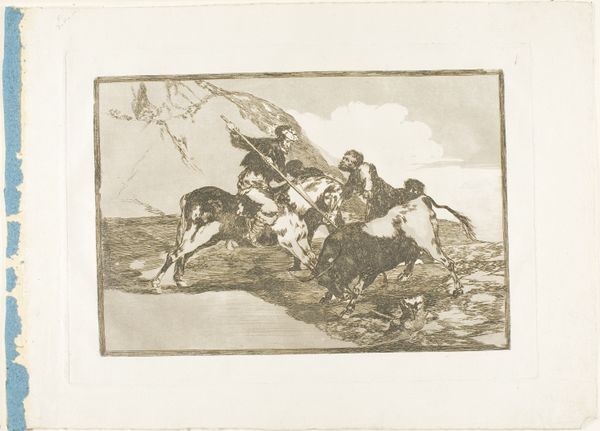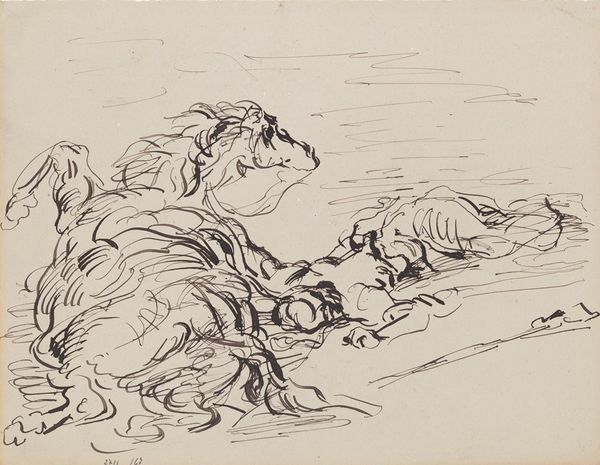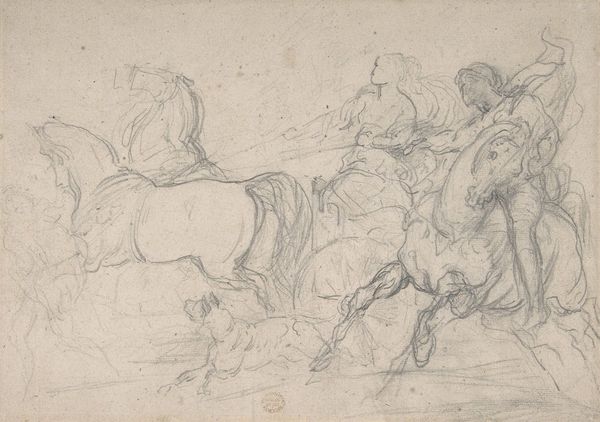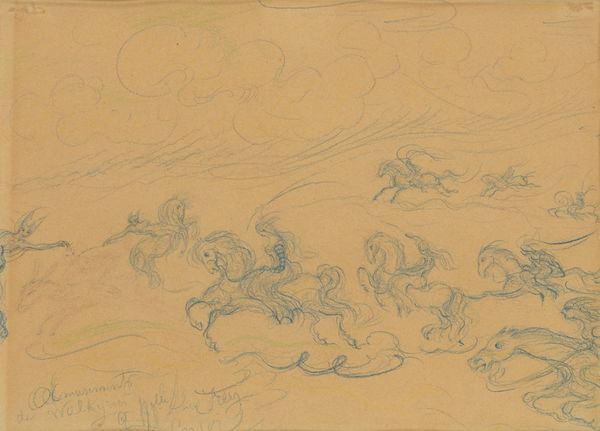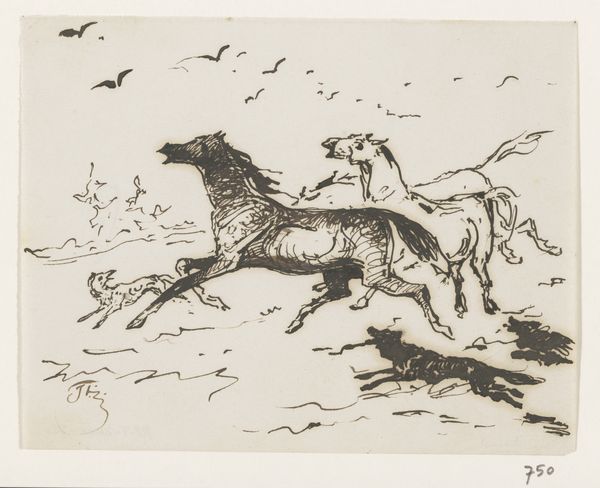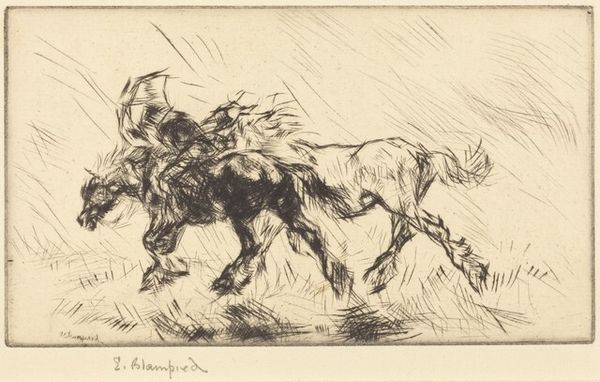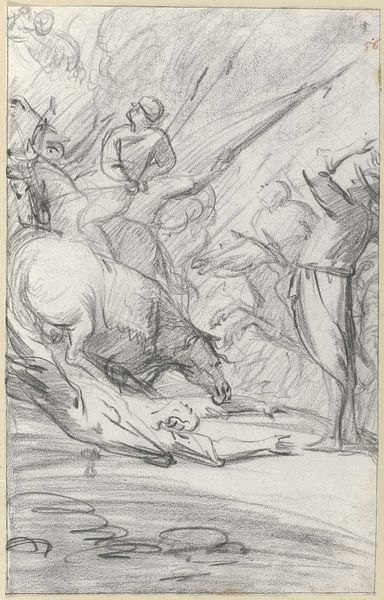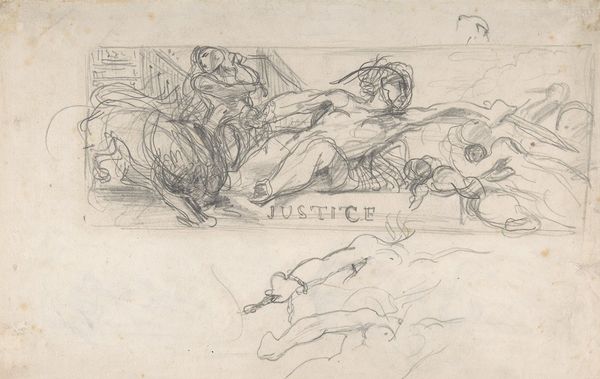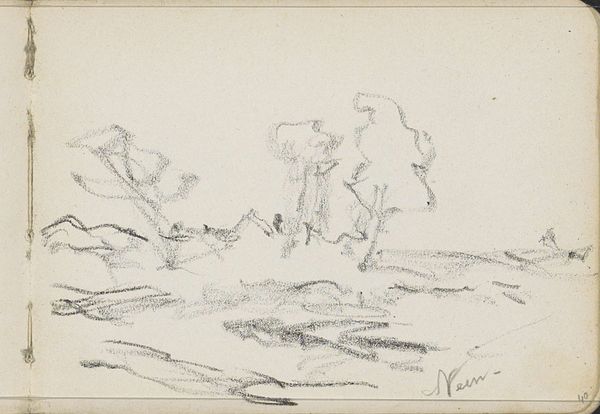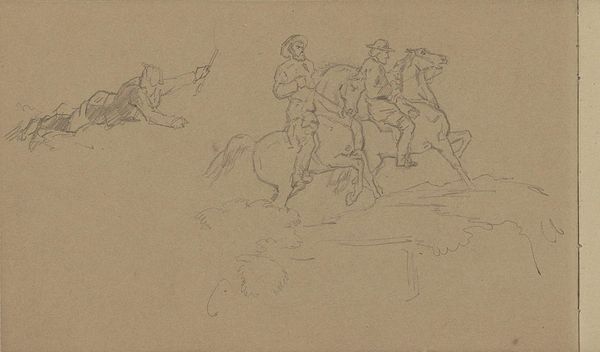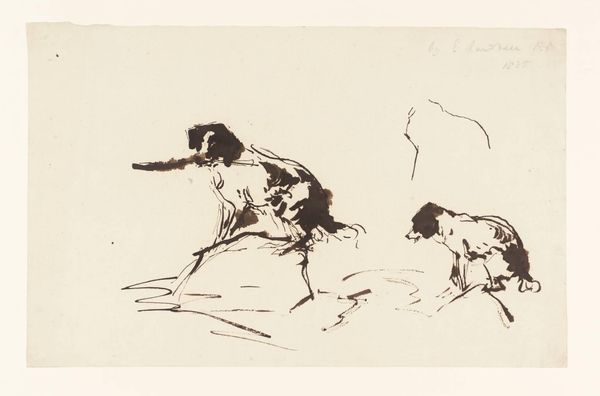
drawing, paper, ink
#
drawing
#
ink drawing
#
dog
#
landscape
#
figuration
#
paper
#
ink
#
romanticism
#
genre-painting
Copyright: Rijks Museum: Open Domain
Curator: This is “Landscape with a Reclining Man and Dog,” an 1839 ink drawing by Johannes Tavenraat. Editor: It feels spontaneous, like a captured moment. The loose, almost frantic lines create a dreamlike quality. There's a primal energy, perhaps, between man and animal, echoed in the sweeping landscape. Curator: Tavenraat was working in a time when Romanticism prized that connection between humans and the natural world, imbuing nature with heightened emotional significance. Editor: I see it. The reclining figure, almost melding with the landscape, evokes a sense of oneness. But what strikes me more are the dogs—their energetic posture versus his languid repose—a contrast. Curator: Consider, though, the relationship between humans and animals in Dutch art historically. The dog as companion is a long-standing visual motif that can represent fidelity, protection, or even just domestic life. This specific placement and activity highlights this cultural connection between humanity and dogs. Editor: Perhaps the dogs are more than faithful companions; maybe they signify instincts unbound. It speaks of something wild still lurking beneath the surface of that calm posture, or the tension between instinct and intellect in man, and perhaps humanity more broadly. Curator: It is a fascinating point. From my perspective, this imagery mirrors societal values of the time, a middle class able to enjoy the simpler genre scene or moment of relaxation outdoors. Editor: It speaks to both, the social element you rightly identify as well as an inner emotional realm. It captures the essence of Romanticism’s obsession with raw, unfiltered feelings. Thanks to these visual symbols and dichotomies, the drawing’s emotional and cultural message still comes through today. Curator: And that tension is precisely what makes this piece of art such a great reflection of the artist’s era and background. Editor: Precisely, allowing us to explore beyond our current understanding.
Comments
No comments
Be the first to comment and join the conversation on the ultimate creative platform.
